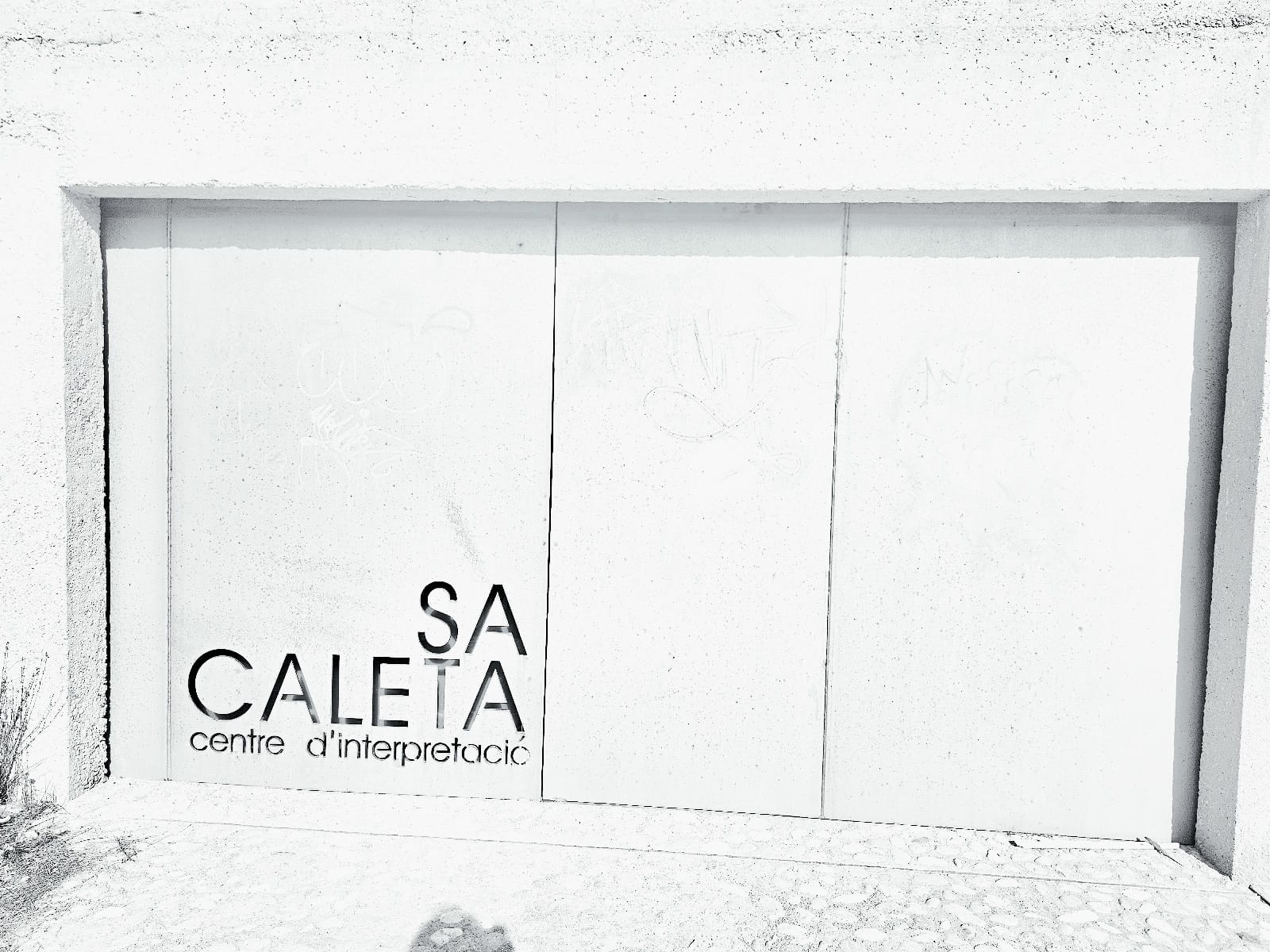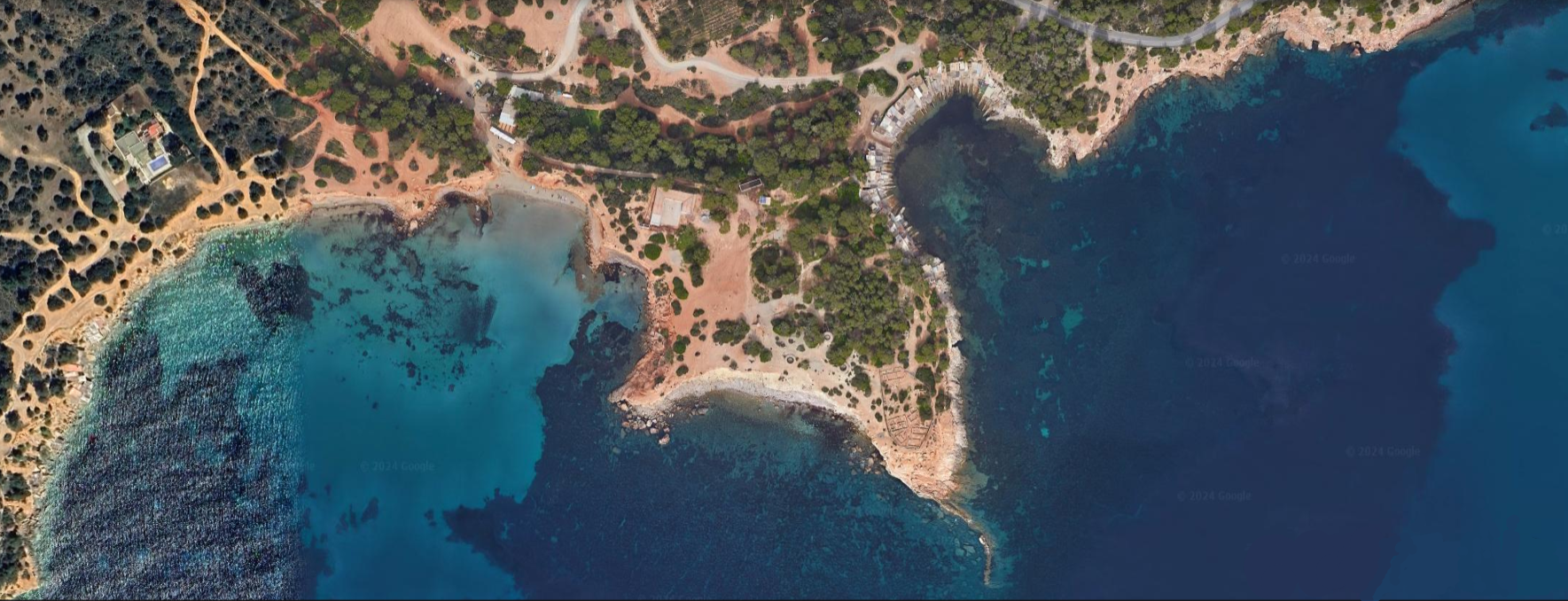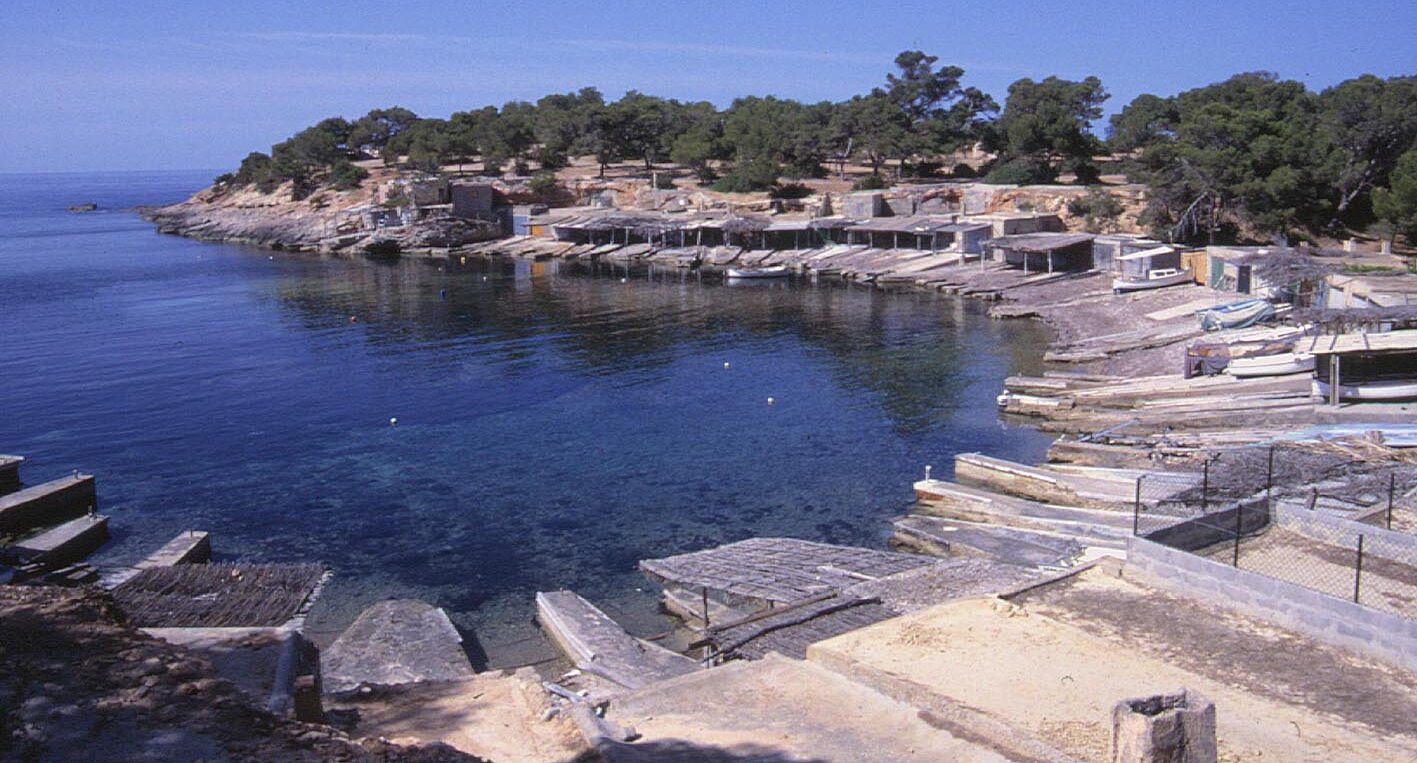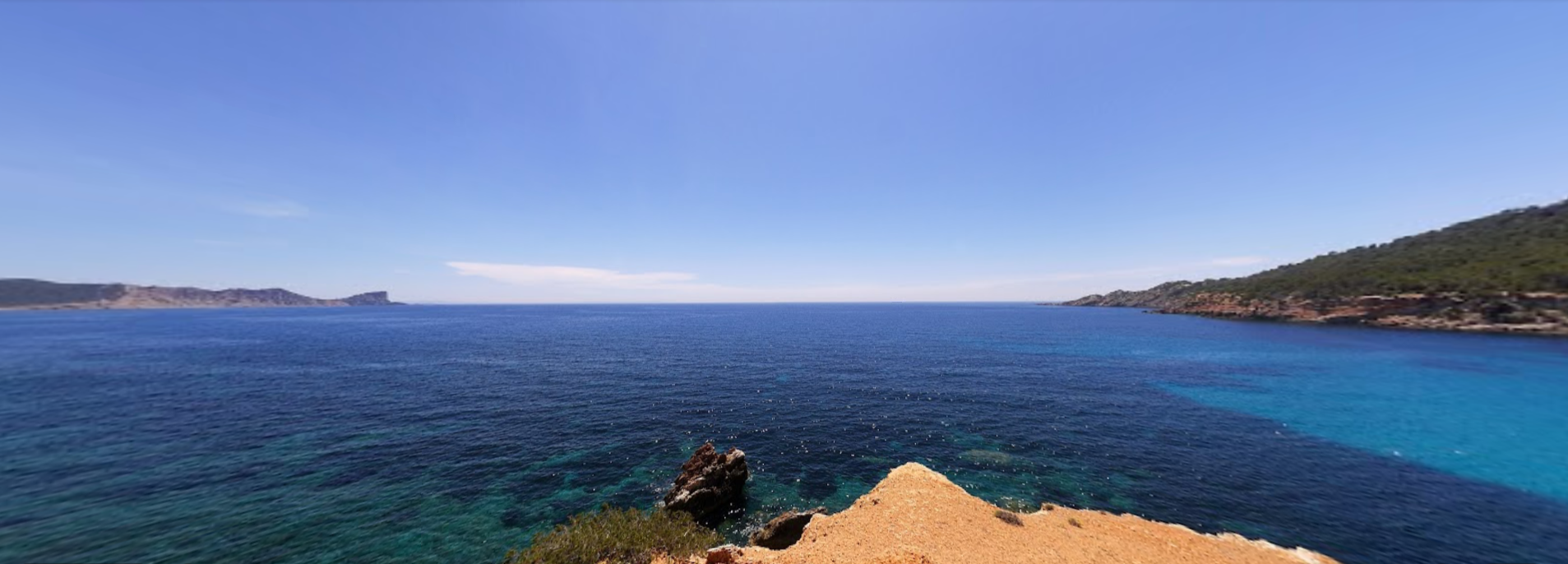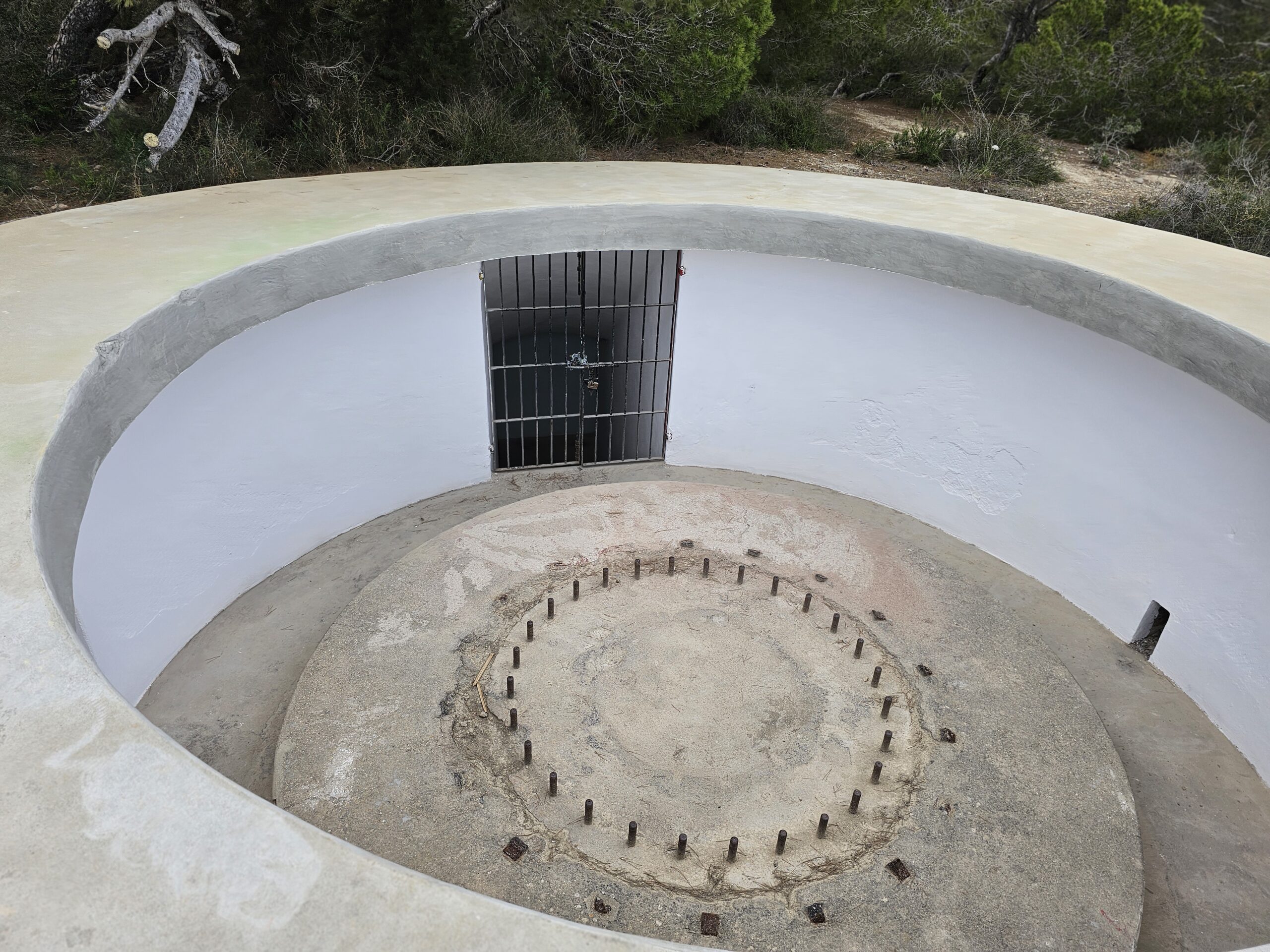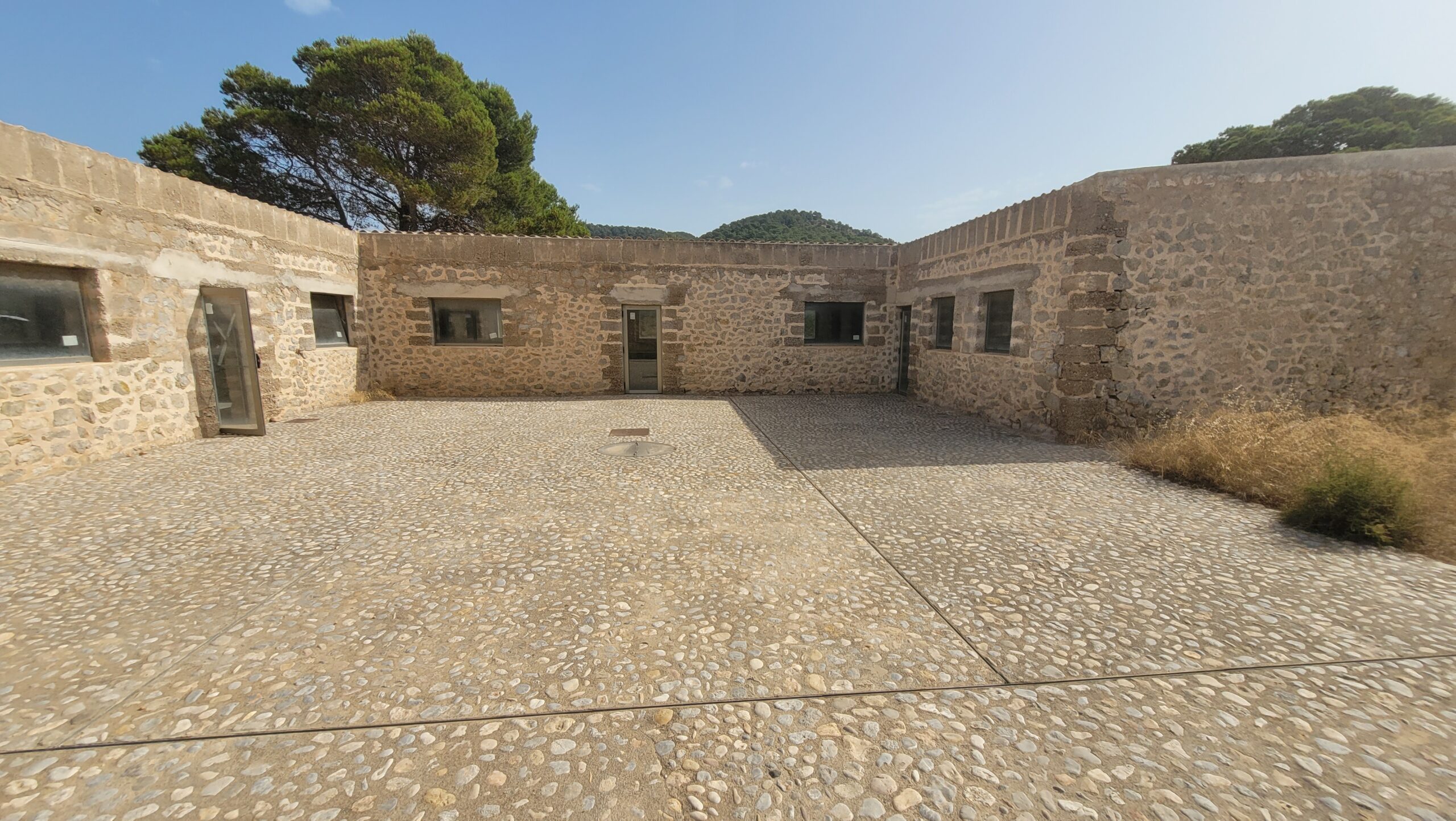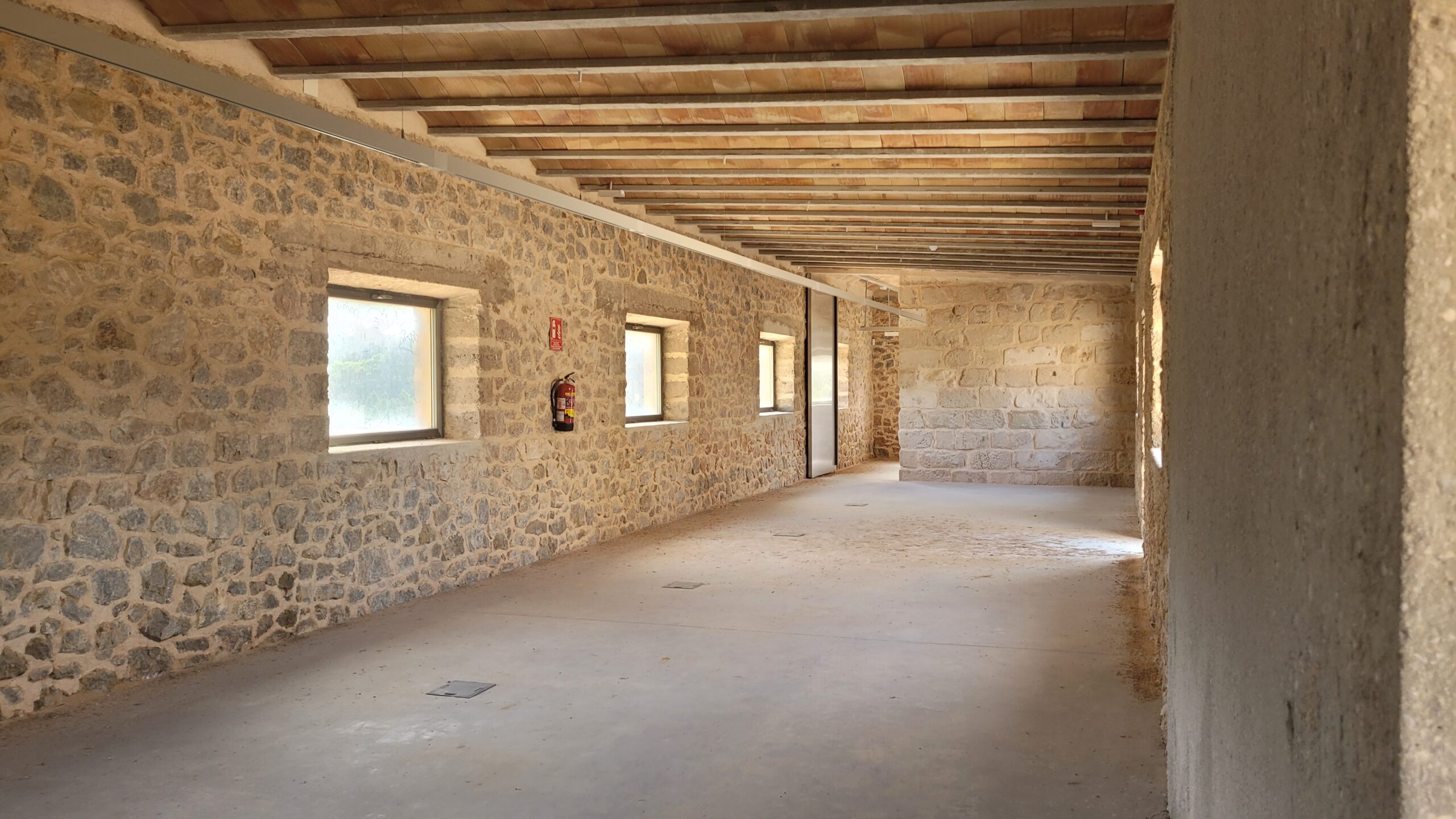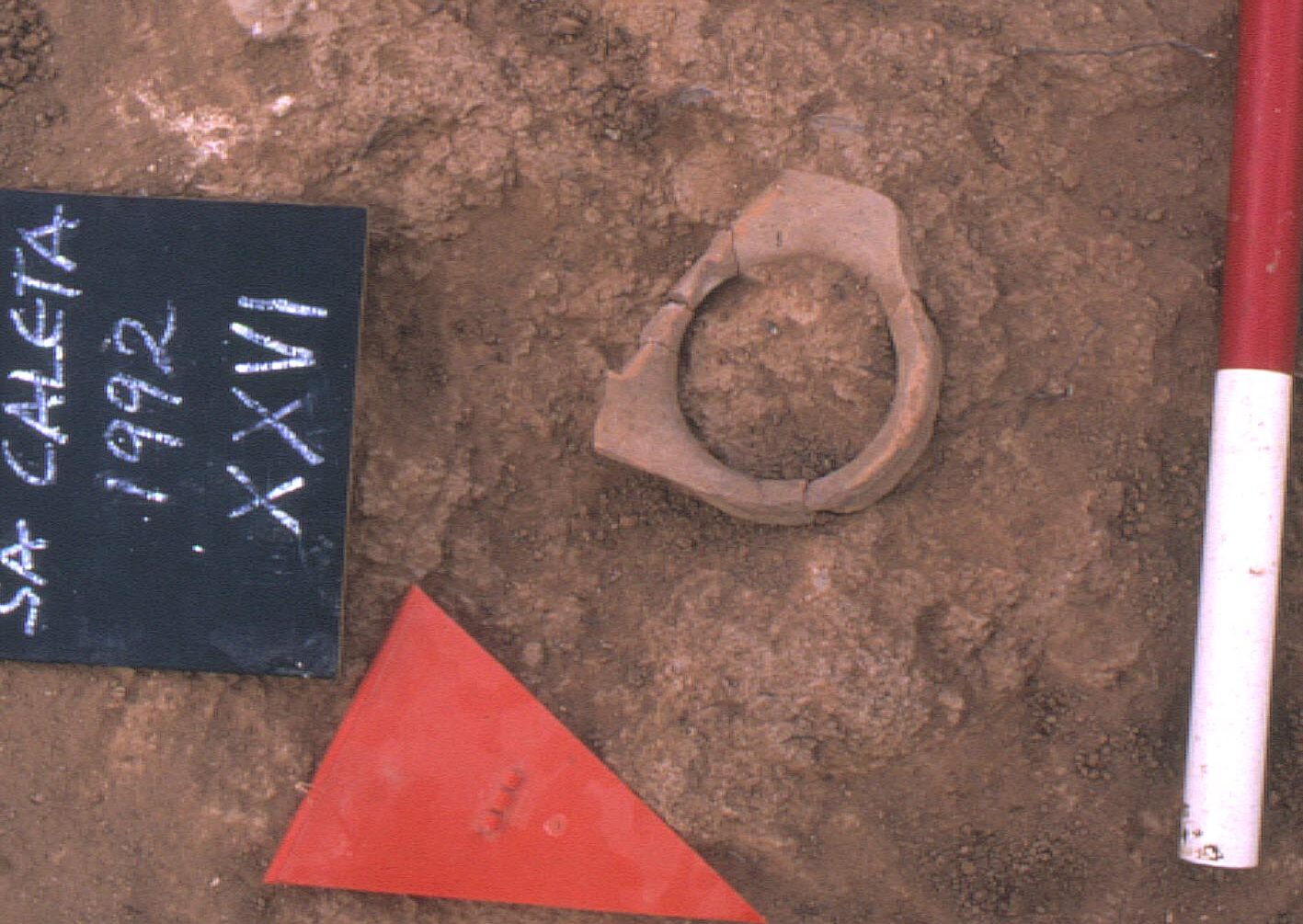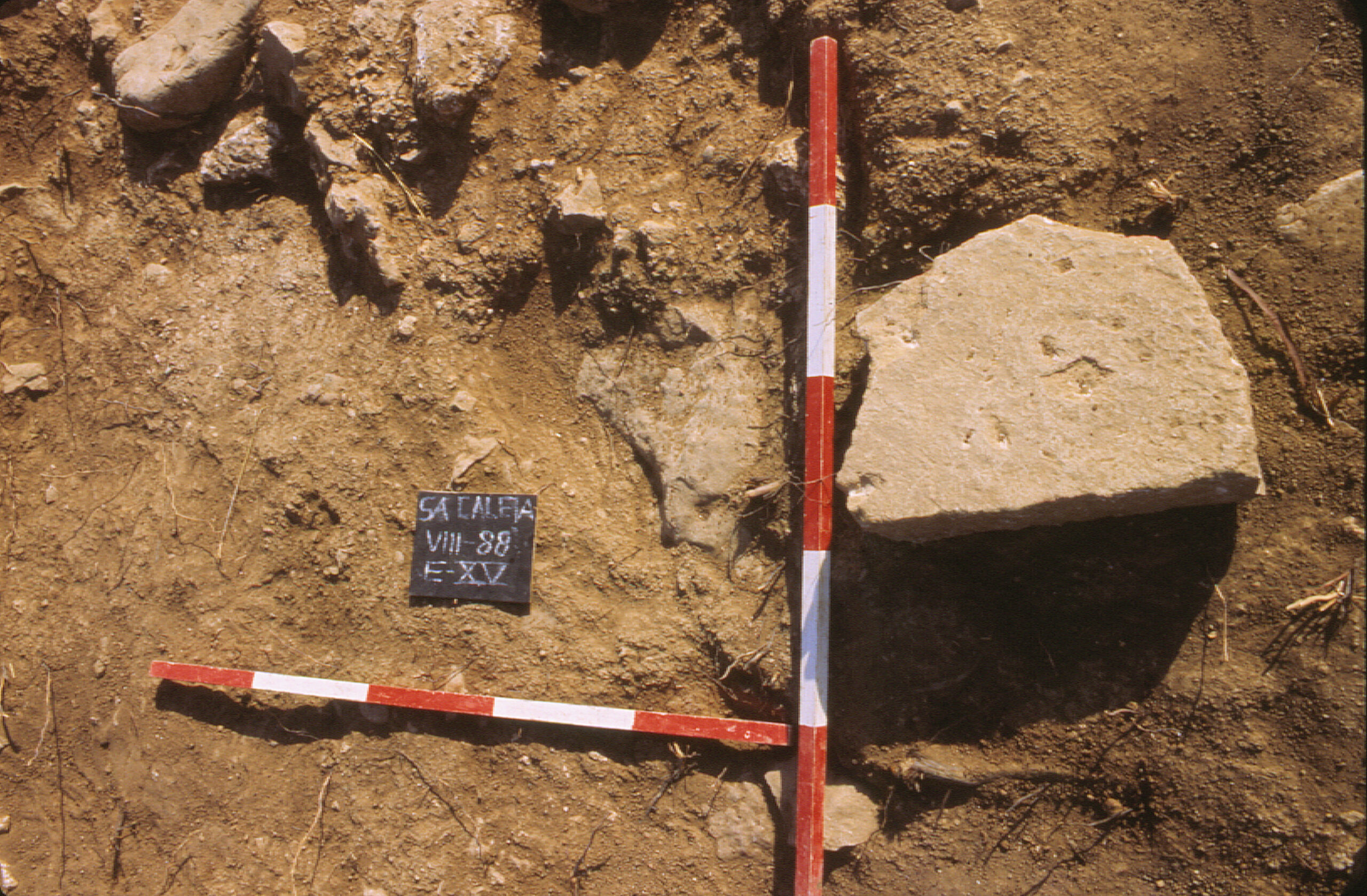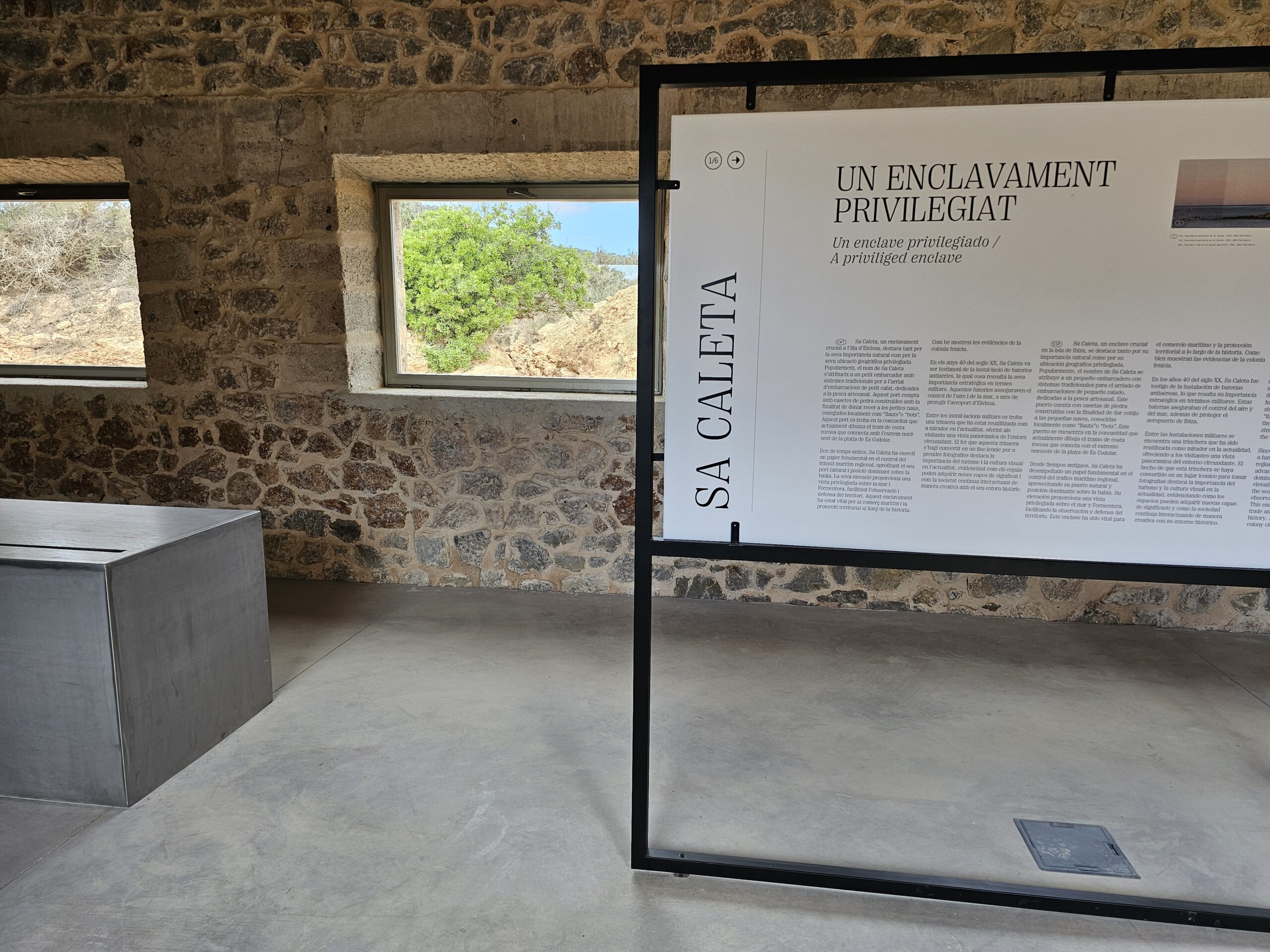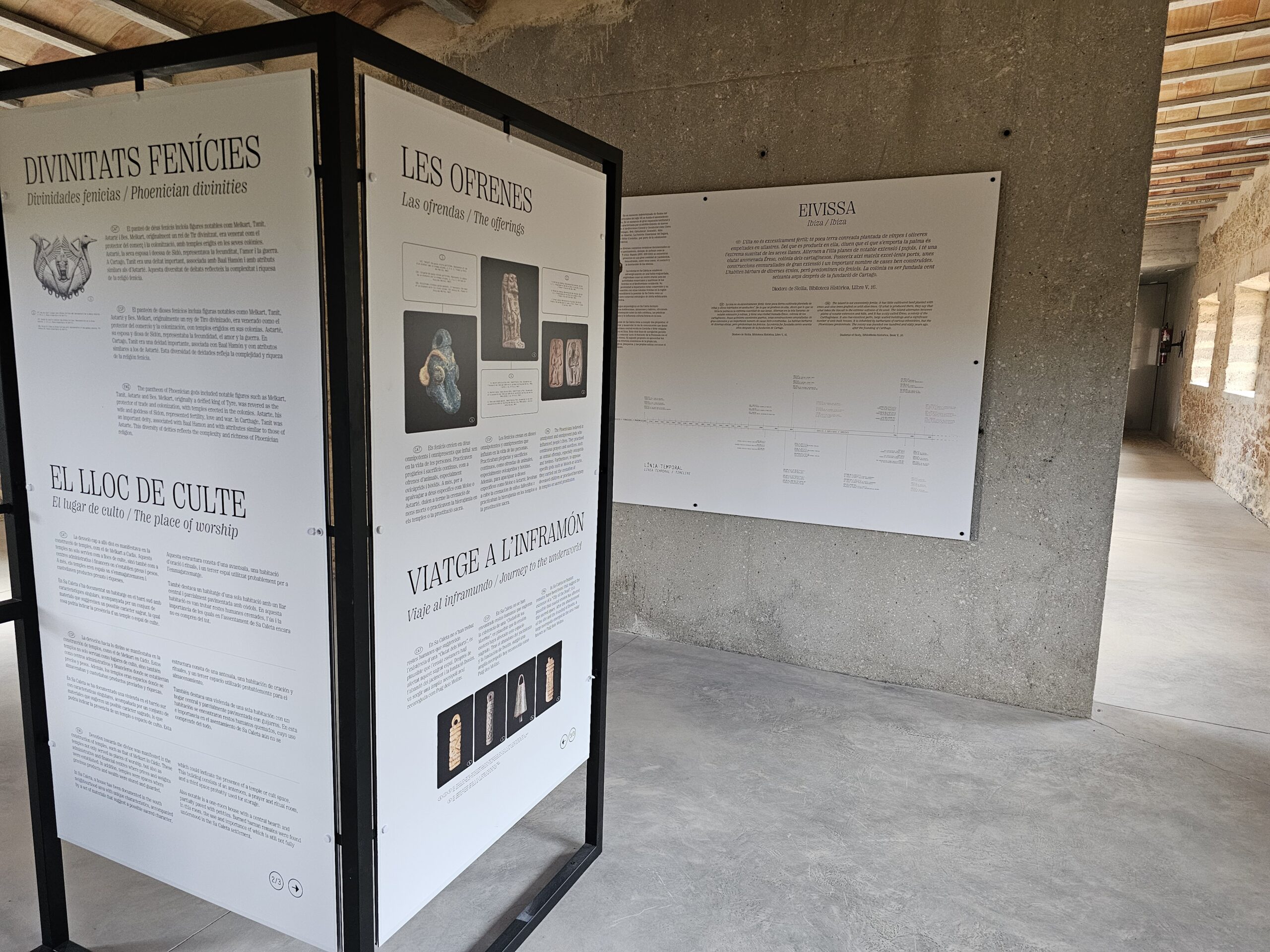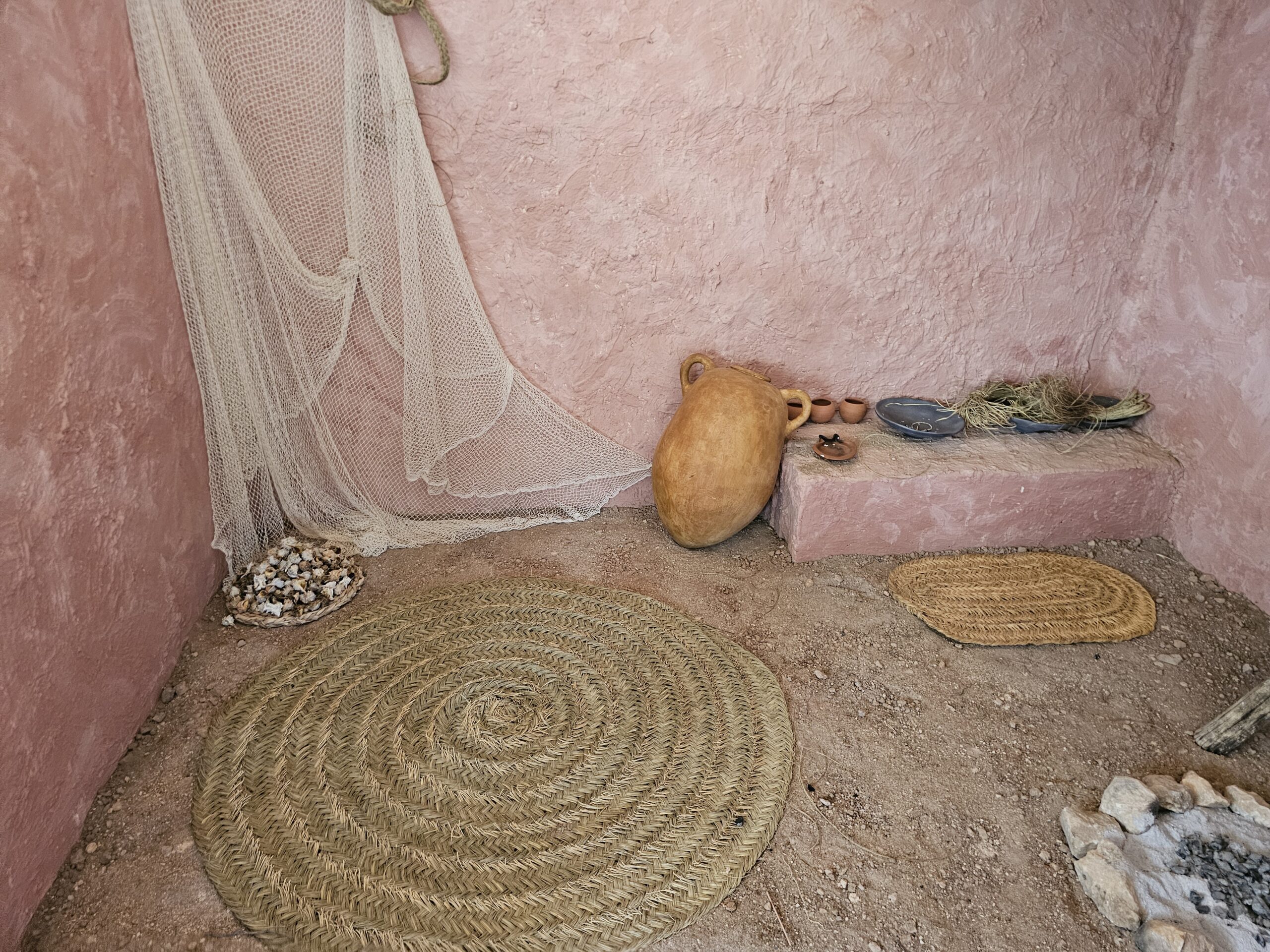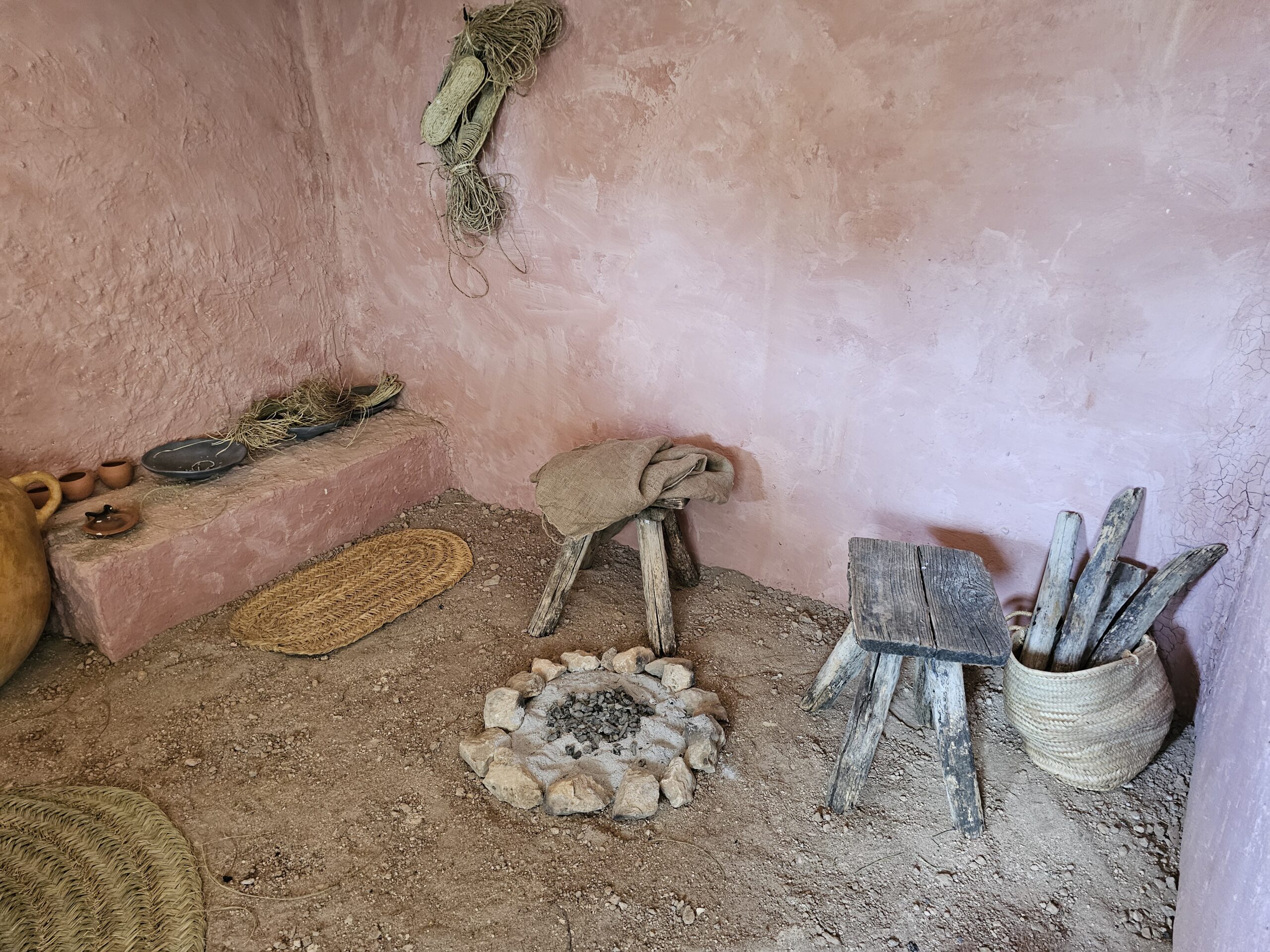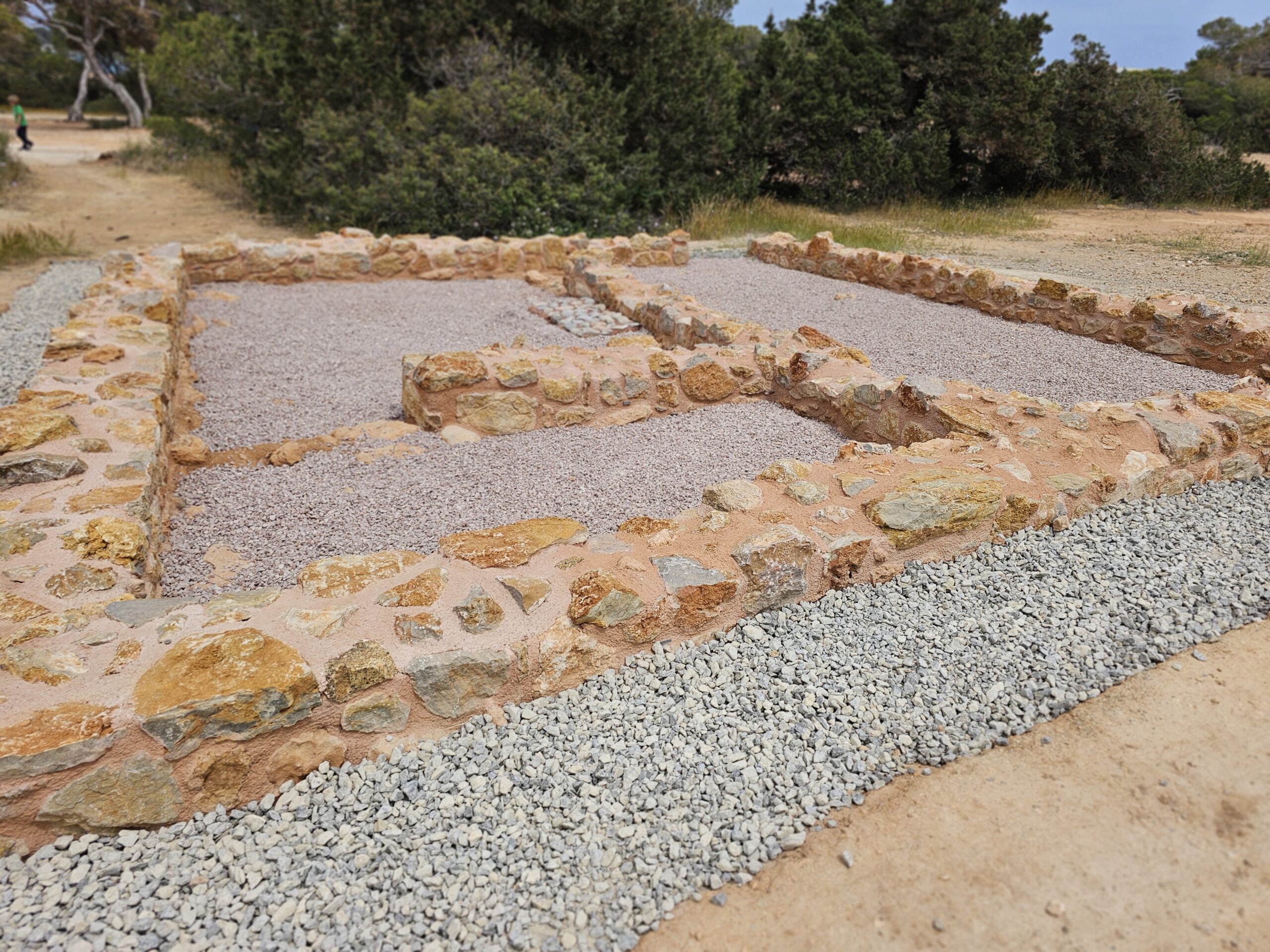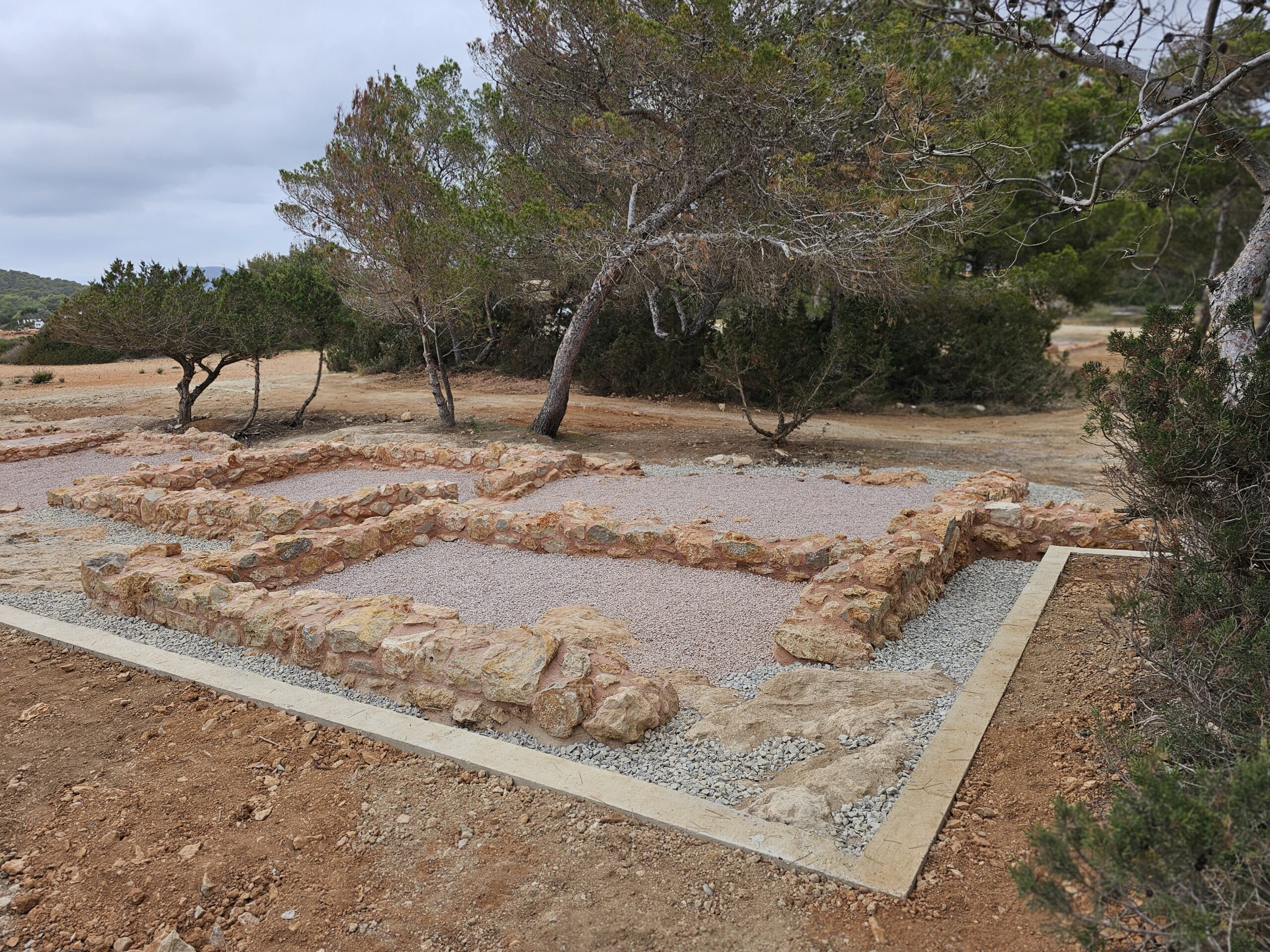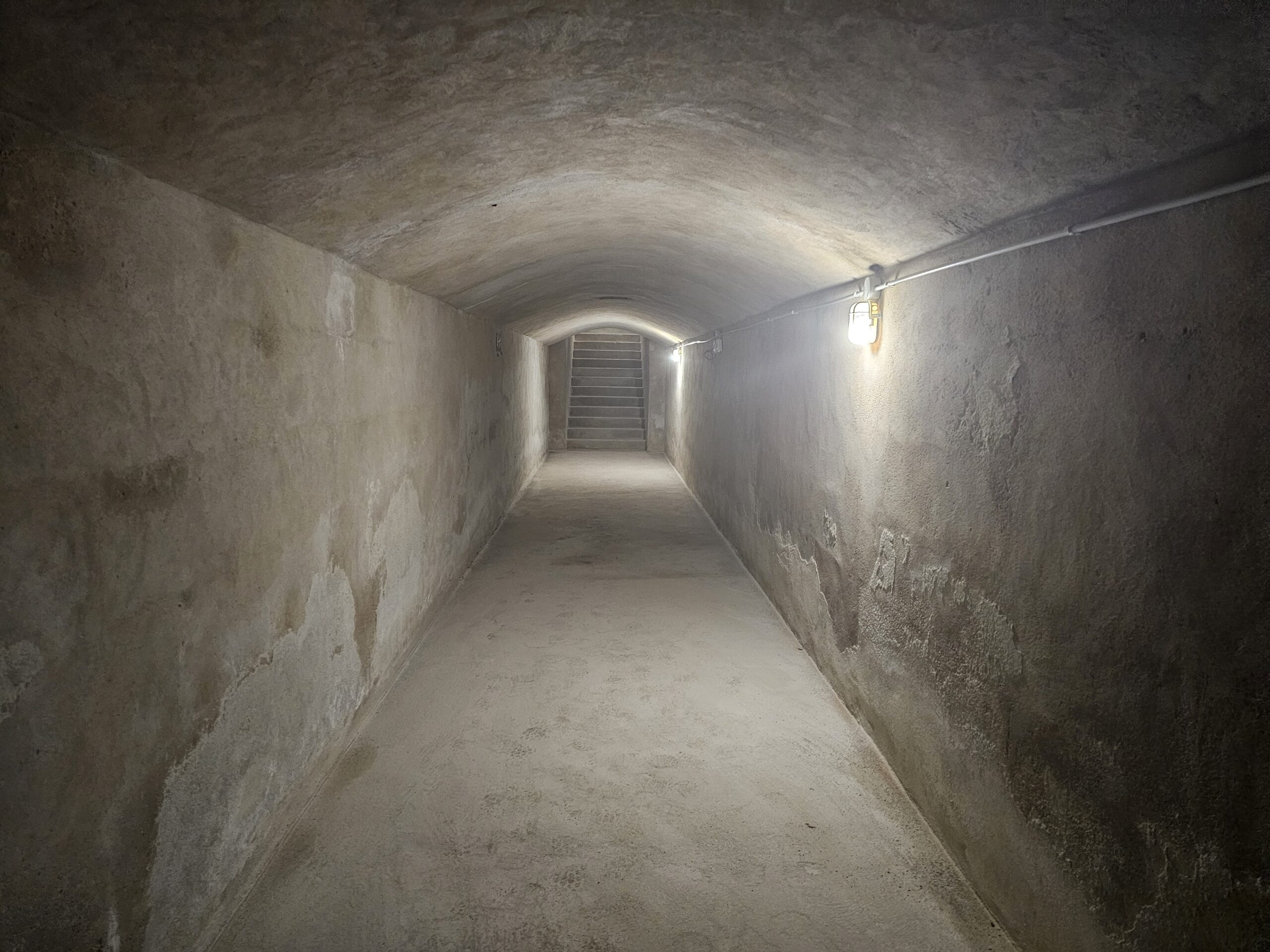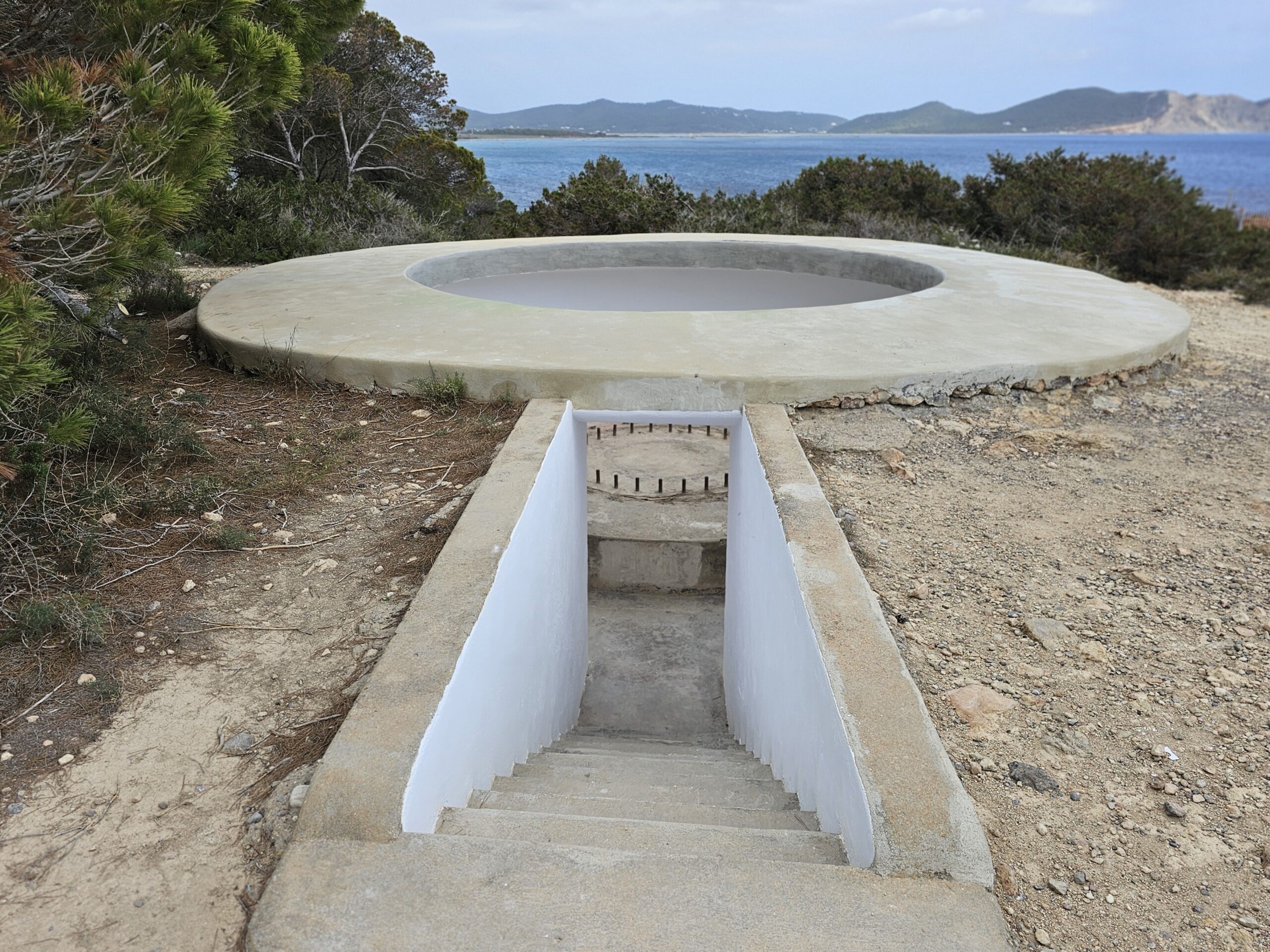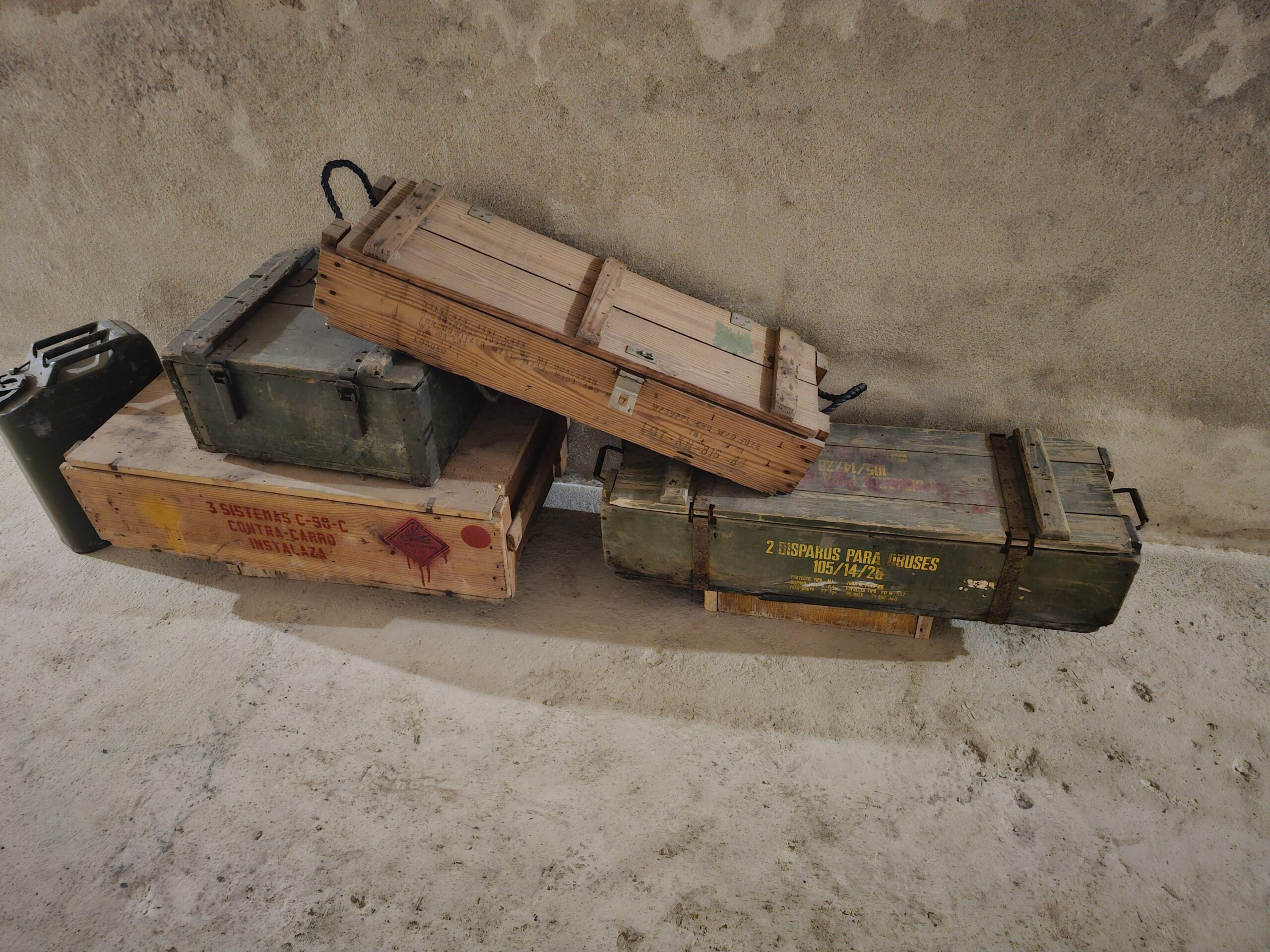INTERPRETATION CENTRE SA CALETA
THE MUSEUM
INTERPRETATION CENTRE SA CALETA
SA CALETA’S MUSEUM: PERMENANT EXHIBITION AND TWO EXTERIOR ITINERARIES
SA CALETA, ´
A PRIVILEGED SETTING
Sa Caleta, a crucial enclave on the island of Ibiza, stands out both for its natural importance and for its privileged geographical location. Popularly, the name Sa Caleta is attributed to a small pier with traditional systems for lowering small draft boats, dedicated to artisanal fishing. This port has stone huts built with the purpose of sheltering small boats, known locally as “llauts” or “bots”. This port is located in the concavity that currently draws the stretch of rocky coast that connects with the north-west end of Es Codolar beach.
Since ancient times, Sa Caleta has played a fundamental role in the control of regional maritime traffic, taking advantage of its natural port and dominant position over the bay. Its elevation provides a privileged view over the sea and Formentera, facilitating observation and defence of the territory. This enclave has been vital for maritime trade and territorial protection throughout history. As the evidence of the Phoenician colony clearly shows.
In the 40s of the 20th century, Sa Caleta witnessed the installation of anti-aircraft batteries, which highlights its strategic importance in military terms. These batteries ensured control of the air and sea, in addition to protecting the Ibiza airport.
Among the military installations is a trench that has been reused as a viewing point at present, offering visitors a panoramic view of the surrounding environment. The fact that this trench has become an iconic photography location highlights the importance of tourism and visual culture today, evidencing how spaces can take on new layers of meaning and how society continues to creatively interact with its historical environment.
ONE PARK,
TWO ROUTES
After the excavation and restoration tasks, visitors have the opportunity to explore two different historical periods in Sa Caleta: the Phoenician settlement and the military installations.
These tours offer a complete perspective of human occupation in the area, from the 7th century BC. until the 40s, when batteries were built. Walking through the Phoenician village, visitors can observe the ancient structures and understand the lifestyle of the early settlers, as well as the historical importance of the site. In addition, by connecting Phoenician archaeology with contemporary archaeology, visitors can explore the interior of anti-aircraft batteries and immerse themselves in audiovisual experiences that transport them to past eras.
For more information about the tours and their options, download the app to enjoy a 360º virtual recreation of the Sa Caleta settlement in the 7th century BC.
Once the app has started, choose your language and guide yourself through the map to find the viewing points distributed throughout the site
Stand in front of the monoliths that you will see near the structures, scan the QR code, click on the number of the scene you are on (1-5) and rotate your device in any direction to see the 360º panoramic image.
EL MÓN FENICI ESTRUCTURES
EL MÓN FENICI ESTRUCTURES
BASE MILITAR BATERIES ANTIAÈRIES
BASE MILITARBATERIES ANTIAÈRIES
INTERPRETATION CENTRE SA CALETA
The current Sa Caleta interpretation centre was once a building with a very different use. During the early 1940s, and in parallel with the construction of the anti-aircraft batteries, this building was built with the purpose of being a military barracks. It was the prisoner of war battalion No. 92, with its 2nd company and detachment No. 80 named Sa Caleta who built the batteries. They were also in charge of the construction of the barracks. The purpose, in this environment and context, was to have a temporary place of residence for the soldiers in charge of garrisoning and using the defence systems (land, naval and air) built in Sa Caleta. The barracks had a bedroom and bathroom for officers, a kitchen, a common dining room and a bedroom for soldiers. Associated infrastructures were built, such as two wells and power lines. The building underwent renovations and modifications until it fell into disuse around the 60s. Currently, and after a series of rehabilitation works, we can once again use the old barracks as the headquarters of the interpretation centre, where the history that the Phoenicians and the military left in this area will be reflected.
Labores Arqueológicas Realizadas
Since the first excavations carried out in the 80s and 90s until the date of inauguration of this archaeological park, Sa Caleta has been the subject of multiple tasks that include archaeological intervention, three-dimensional documentation, restoration of structures, rehabilitation of facilities and the museumization of the complete route.
In their first interventions, Joan Ramón Torres and his team excavated a large area of the Phoenician settlement and highlighted the first Phoenician settlement on the island. After that, they undertook the first restoration, which opened the archaeological park to the public for visits. Currently, Arpa Patrimonio’s work has consisted of revisiting the archaeological levels studied by Joan Ramón, obtaining new archaeological data and, again, valuing and protecting the heritage through its restoration.
The current result is due to the collaboration and joint work of various professional teams that intervened in the site at different times and contexts. From the first archaeological campaigns that provide great knowledge about the Phoenician world and the settlement, to the current work that has highlighted this archaeological knowledge through new technologies.

